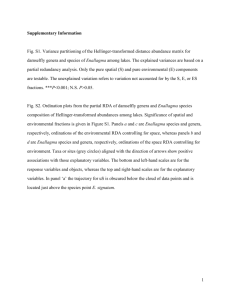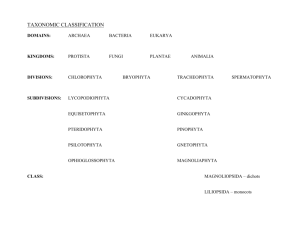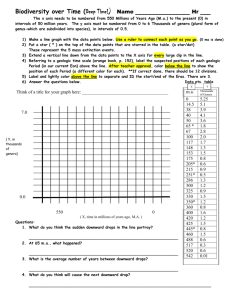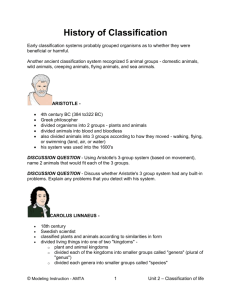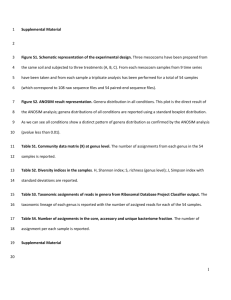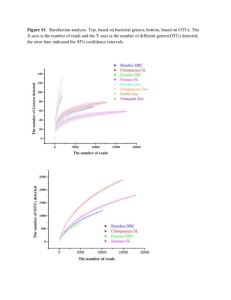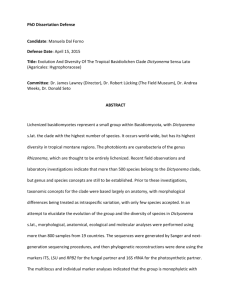Engler Anacardiaceae phylogeny Bot Jahrb 1881_0
advertisement
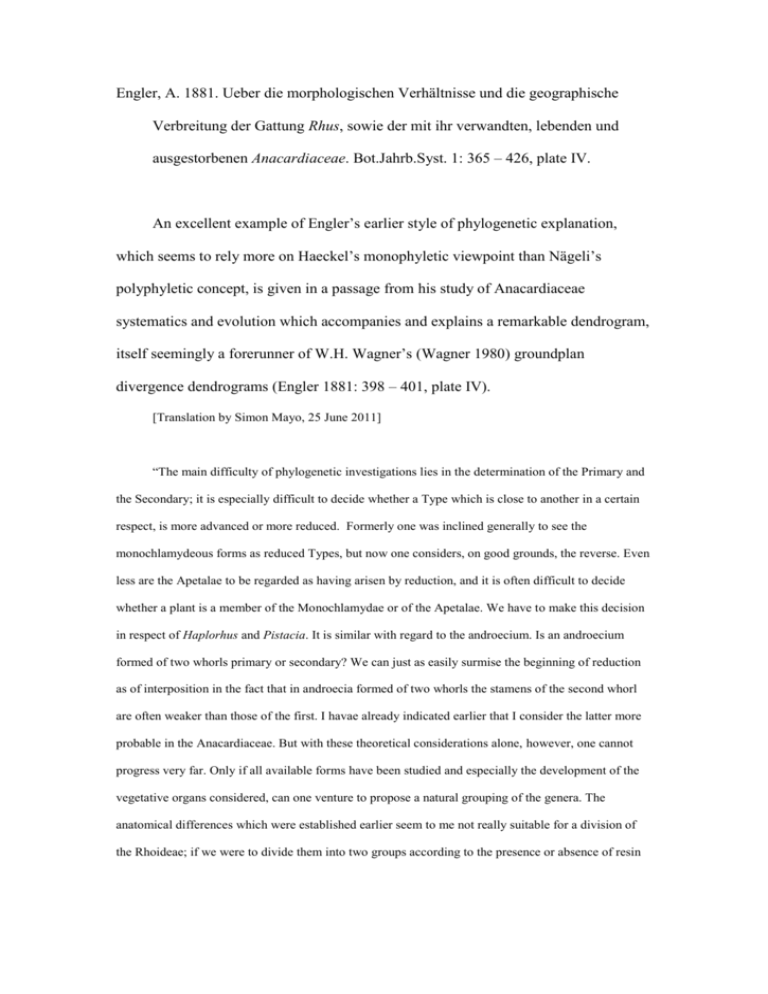
Engler, A. 1881. Ueber die morphologischen Verhältnisse und die geographische
Verbreitung der Gattung Rhus, sowie der mit ihr verwandten, lebenden und
ausgestorbenen Anacardiaceae. Bot.Jahrb.Syst. 1: 365 – 426, plate IV.
An excellent example of Engler’s earlier style of phylogenetic explanation,
which seems to rely more on Haeckel’s monophyletic viewpoint than Nägeli’s
polyphyletic concept, is given in a passage from his study of Anacardiaceae
systematics and evolution which accompanies and explains a remarkable dendrogram,
itself seemingly a forerunner of W.H. Wagner’s (Wagner 1980) groundplan
divergence dendrograms (Engler 1881: 398 – 401, plate IV).
[Translation by Simon Mayo, 25 June 2011]
“The main difficulty of phylogenetic investigations lies in the determination of the Primary and
the Secondary; it is especially difficult to decide whether a Type which is close to another in a certain
respect, is more advanced or more reduced. Formerly one was inclined generally to see the
monochlamydeous forms as reduced Types, but now one considers, on good grounds, the reverse. Even
less are the Apetalae to be regarded as having arisen by reduction, and it is often difficult to decide
whether a plant is a member of the Monochlamydae or of the Apetalae. We have to make this decision
in respect of Haplorhus and Pistacia. It is similar with regard to the androecium. Is an androecium
formed of two whorls primary or secondary? We can just as easily surmise the beginning of reduction
as of interposition in the fact that in androecia formed of two whorls the stamens of the second whorl
are often weaker than those of the first. I havae already indicated earlier that I consider the latter more
probable in the Anacardiaceae. But with these theoretical considerations alone, however, one cannot
progress very far. Only if all available forms have been studied and especially the development of the
vegetative organs considered, can one venture to propose a natural grouping of the genera. The
anatomical differences which were established earlier seem to me not really suitable for a division of
the Rhoideae; if we were to divide them into two groups according to the presence or absence of resin
canals in the pith, then Metopium would be placed in a different group from Rhus. And furthermore,
various species of Rhus differ in this respect.
However, the patterns of geographical distribution furnish important supporting evidence,
although a biased consideration of these facts can also lead to error. At any rate, it is always more
probable that a genus is linked to others that occur together with it; this consideration will be especially
justifiable in genera of tropical regions in which major changes and displacements in plant distribution
have happened to a lesser degree. Based on this viewpoint I believe that the evolutionary connections
[verwandtschaftlichen Beziehungen] of the Rhoideae can now be represented graphically in the
following way.
In the accompanying figure (Plate IV) the branches of the evolutionary tree [Stammbaumes] end
at the circumferences of eight concentric circles and what is thus indicated is the stage which each
individual genus has reached.
I.
indicates an evolutionary stage [Entwicklungsstufe] of T A G {Tepals, Androecium,
Gynoecium}, i.e. the flowers are monochlamydeous.
II.
corresponds to the the stage C P A G {Calyx, Petals, …}, i.e. the flowers are
diplochlamydeous and the androecium is composeed of a single whorl.
III.
corresponds to the stage C P A + A G, i.e. there are two stamen whorls present.
IV.
corresponds to the stage C P A + Ạ G, i.e. the second stamen whorl is in the process of
atrophy or is completely aborted.
Apart from these numbered circles there are four others, denoted with b. are by The circles
denoted by a specify those genera in which the gynoecium has 3 or 2 locules containing ovules,
whereas genera in which the gynoecium contains only one ovule are found on the circles denoted by b.
The geographical region of distribution is also appended to the name of the genus.
One can see first of all that I have not attached Thyrsodium to one of the two major stems to
which most of the other genera belong.
The genus Thyrsodium is rather isolated by the cup-shaped cavity of the floral axis; it comes
closer to the genera related to Sorindeia than to those more closely linked to Rhus. The rather few
differences between Trichoscypha, Euroschinus and Sorindeia have been discussed earlier. The fruits
of Microstemon and Parishia are similar to those of Sorindeia, Trichoscypha and Euroschinus,
especially to those of Trichoscypha; the strong enlargement of the calyx segments in the fruit of
Parishia is indeed a remarkable character, but secondary for the grouping. Apart from in Pentaspadon
the ovule in all genera of this branch is inserted at the upper end of the ovary locule.
The number of genera which belong to the second major stem is much larger. First we see a
small branch separating with Haplorhus and Pistacia, whose fruits (apart from Pistacia vera) are
similar to those of Rhus, Botryceras, Cotinus; it is however extremely unlikely that Haplorhus and
Pistacia have been the origin [Ausgangspunkt] of any of these genera since they had already attained
dioecy. The genus Protorhus is the one which has most kept the original Type, if {one imagines that}
later only one ovule becomes a seed; also by the simple, undivided leaves it shows itself to be a
member of an older Type whose near connections to Anaphrenium have already been discussed above.
Like the latter genus, Campnosperma, particularly different from the other two because of its
diplostemony, must also be linked to Protorhus. The geographical distribution of this genus in
Madagascar, in the Seychelles, in the East Indies, if we take account of Drepanospermum, in tropical
America, shows also that this genus must be very old. With the Type of Protorhus are linked the
Semecarpeae, which also have simple leaves, but which have not attained diplostemony. Since the
Semecarpeae form such a natural group, I feel their separation as a tribe is justified, but I am quite
convinced that they are derived [ihren Ausgangspunkt hatte] from Protorhus and Campnosperma. The
mediterranean genus Cotinus agrees with the Cape genera Botryceras, Smodingium and Loxostylis in
the lateral position of the style, although closer connections between these genera have not been found;
one can only presume that they have diverged from a Type whose origin coincided with that of
Protorhus. The genera of the closely related group connected with Rhus belong to such a Type which
however followed a different evolutionary development [andere Entwicklung]. At the same stage as
Rhus are Metopium, Comocladia, Pseudosmodingium, Lozopterygium, Schinopsis and also Faguetia.
These genera diverge from Rhus first by the nature of their fruits, Faguetia additionally by
tetramery, Comocladia by tetramery or trimery of the flowers. After that the insertion of the ovule in
the other genera is different than in Rhus and Metopium; in the latter it is basal, and in the others
inserted at the upper end of the locule, although in Rhus sometimes the funicle arises from the side wall
and not from the base. All these genera are isostemonous and Schinus, Lithraea and Rhodosphaera are
diplostemonous. The fruits of these three genera are very similar to those of Rhus particularly those of
Schinus and Lithraea. The position of the ovule is the same in Rhodosphaera and Lithraea as in Rhus
and in Schinus it is inserted at the upper end of the locule. The geographical range of these three genera
lies in the southern hemisphere. The range of Schinus borders on that of Rhus in the Andes; however
the single South American Rhus, Rh. juglandifolia, does not exactly correspond to a Type which could
be derived from Schinus and Lithraea. The fact that in both the leaves are simple and that Lithraea is
also represented in Australia signifies that their origin is to be sought nearer to Protorhus and in the
southern hemisphere.” (Engler
1881: 398 – 401, plate IV).
